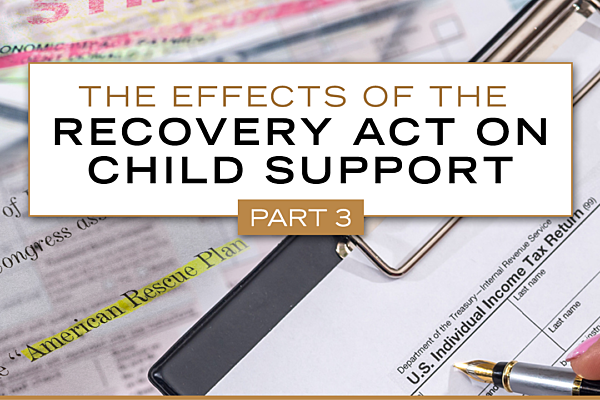In this continuing series, we cover how the Recovery Act may affect child support. In our last post [link to previous post], we covered the impact of the Child Tax Credit. In this post, we’ll address the Child Care Credit and Dependent Care Exclusion.
Under the Rescue Act, the Child Care Credit and Dependent Care Exclusion has been expanded for tax year 2021 only. Again, the Rescue Act’s expansion allows more families to benefit and increases the size of the benefit. However, recent news articles and commentaries on the Rescue Act suggest that fewer taxpayers will benefit from this exclusion when compared to those who will benefit from the Child Tax Credit. This is because families that enlist formal childcare tend to be upper-middle class, while low-income families tend to rely on informal care and don’t incur child-care expenses that qualify.
In previous tax years, the Child and Dependent Care Credit was available for parents to claim a tax credit up to 35% of the first $3,000 of childcare expenses for one child under 13 (or adult dependent needing at-home care) or $6,000 for two or more children.
For example:
- Two children: Eligible families with income of $15,000 or less could claim 35% of childcare expenses for a maximum credit of $2,100 (.35 x $6,000).
- Two children: Families with income of $43,000 or more could claim 20% of childcare expenses for their maximum potential credit of $1,200 (.20 x $6,000).
- In the 2020 tax year, the credit was not refundable.
Under the Rescue Act, the Child and Dependent Care Tax Credit increased. The Child and Dependent Care Tax Credit increased up to 50% of $8,000 in childcare expenses for one child, or $16,000 for two or more children. Thus, the maximum credit allowed is $4,000 ($8,000 for two or more qualifying individuals). Similar to the Child Tax Credit, for the 2021 tax year, the credit is fully refundable. The credit reduces by one percentage point for each $2,000 of a taxpayer’s income exceeding $125,000. The credit percentage does not go below 20% until the taxpayer’s income exceeds $400,000, then the reduction of credit percentage continues until zero.
For example:
- One child: Eligible families with income of $124,999 or less could claim 50% of child care expenses for a maximum credit of $4,000 (.50 x $8,000).
- Two children: Eligible families with income of $124,999 or less could claim 50% of child care expenses for a maximum credit of $8,000 (.50 x $16,000).
- In the 2021 tax year, the credit is refundable.
How Does the Child Care Credit and Dependent Care Exclusion Affect My Child Support Order?
Similar to the Child Tax Credit, Rule 1910.16-6(a) discusses Child Care Expenses. Prior to the expansion, many middle-class to upper middle-class families did not consider the Child Care Tax Credit because they were ineligible to receive it. Now, with the expansion, it should be considered, and may impact the amount of the monthly support order.
Since the Child and Dependent Care Tax Credit is fully refundable for tax year 2021, will that also be considered income? Similar to the Child Tax Credit, it should not be considered income if the Child and Dependent Care Tax Credit is figured into the child support calculation. Again, it would constitute a double dip.
Financial issues surrounding divorce and custody can be confusing. If you have questions about your particular situation, please contact Williams Family Law at 215-340-2207, or email info@bucksfamilylawyers.com.





